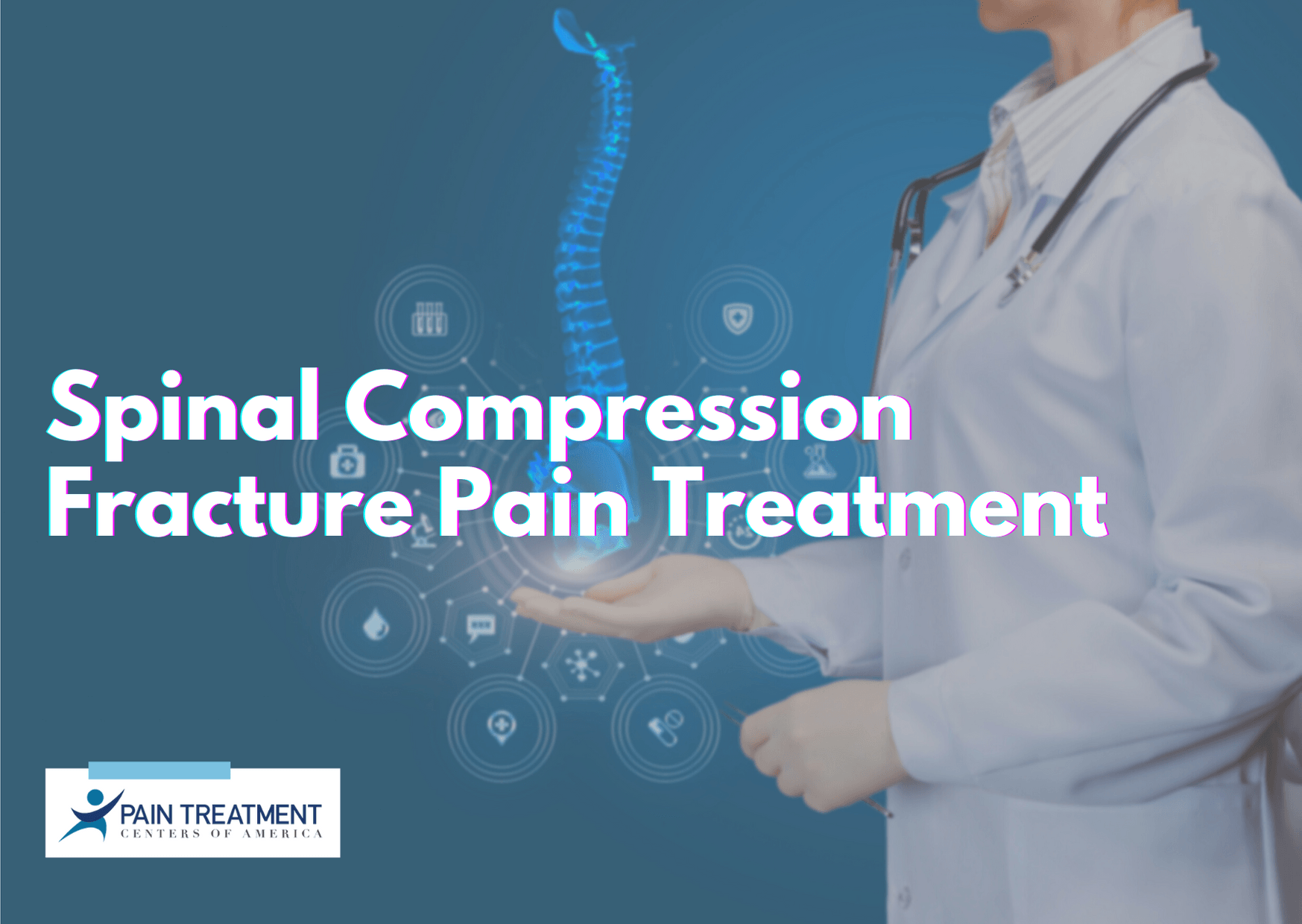Call for more information: (844) 215-0731
New Patient Department:
(501) 254-0967
Referrals (Fax): (888) 630-8885
Medical Records (Fax): (501) 476-5707

Treatment for Pain Associated with Spinal Compression Fractures
As we age, our bones become weaker, and as the weight they must bear remains relatively the same, they may crumble from the pressure. The effect of this pressure on the spine is known as spinal compression fractures, a painful condition that impairs posture and causes walking difficulties.
Causes of Spinal Compression Fractures
The most prevalent cause of compression fractures is osteoporosis. Osteoporosis is where the body either loses or cannot make bone tissue, resulting in brittle bones. As a result of this bone weakness, the vertebrae in the spinal column collapse and shorten, a condition that precedes compression fractures.
Other possible causes of compression fractures include trauma from road accidents, injuries from various sports activities, and tumors on or around the spinal column.
Risk Factors and Symptoms
Osteoporosis is the most common cause of compression fractures. This means that if you are over 50, it is in your best interest to watch out for the condition. Additionally, if you participate in physically demanding sports such as skiing, the probability of accidents puts you under the at-risk group. Individuals who have had compression fractures before are at a high risk of getting them again.
Some of the symptoms of compression fractures include back pain that gets worse with time, a reduction in your height, and a limitation of your spine's movement. Additionally, one may present with numbness and abnormal curvature of the spine, usually a forward stoop, that can result in motor challenges, where movement becomes challenging.
Treatment Options
There are several treatment options for these fractures, focusing on either the causative or symptomatic aspects. Some of the available medical interventions include using supplements and medications that strengthen bone, pain medication, and bed rest. Doctors may also suggest exercise and physical therapy, braces, surgery, and radiation therapy.
Supplements and Medications That Strengthen Bone
The leading cause of compression fracture is osteoporosis, so a doctor will likely treat it if present. Some drugs work to strengthen bones. These drugs contain calcium and vitamin D supplements.
As long as your bones are healthy, your pain will dissipate and go away in a short time. Examples of drugs that you might use to reduce bone loss and increase its formation include bisphosphonates such as Risedronate, Romosozumab, and Denosumab. New studies have shown that parathyroid hormone helps in bone growth.
Bed Rest
Bed rest refers to taking a rest from strenuous physical activity. This rest does not imply that you remain bound to a bed because inactivity may further weaken the bones. As long as you balance bed rest and some degree of activity, you can count on recovering in a short time.
Exercise and Physical Therapy
Physical therapy or exercise helps you regain functional use of the back muscles by building their strength despite the condition. Exercise helps prevent further fracturing because it eases the strain and pain on the back. Taking walks, dancing, stretching out in yoga, or taking part in some martial arts are some of the ways that you can exercise alone or with the help of a physical therapist.
Braces
Braces limit your movement and ease the pressure off your back. The support offered is due to the rigid nature of braces. Your doctor will aid you in finding the best fitting mount. The type of mount that the doctor will prescribe depends on the degree of comfort it provides. Even though braces my not necessarily help compression fractures heal, they ease the pain, which goes a long way in aiding recovery.
Surgery
Sometimes, all the interventions above may fail to work, resulting in fractures causing chronic symptoms. If the symptoms persist, your doctor may recommend surgery. Available surgical treatments currently include vertebroplasty, kyphoplasty, and vertebral fusion.
- Vertebroplasty: This procedure involves injecting small amounts of acrylic bone paste that, on hardening, stabilizes any fragmentation and eases the pain almost immediately. Using X-rays to ensure accuracy, the doctor injects the paste into the fractures using needles carrying the paste. Vertebroplasty gives the broken vertebrae strength to support the rest of the body without fracturing further.
- Kyphoplasty: Kyphoplasty is similar to vertebroplasty, except it involves the use of balloons. This procedure uses small balloons whose primary use is expanding the fractures and creating a cavity that the doctor fills with the bone adhesive. Like the process above, kyphoplasty eases pain, strengthens the vertebra, and improves posture.
- Vertebral fusion: This surgical technique is the last resort treatment for spinal compression fracture. It has various applicable situations, including injuries from accidents or sports. The idea is to reduce or eliminate any motion between the vertebra while reducing pain. By using screws and metallic rods or plates, the vertebrae are held together to allow them to grow or fuse, thereby easing the pain. This process is relatively longer than the others, and you may take longer to recover from it.
Radiation Therapy
In rare cases, the symptoms of compression fractures may be due to a malignancy. Depending on the cancerous growth stage and location, you can either go through chemotherapy, surgery, or radiotherapy. Radiation therapy is a more effective way of handling malignancies and is a viable option in treating spinal compression fractures.
A compression fracture can affect anyone as long as the conditions that precede it are present, prior infection notwithstanding. The pain management interventions that we give here are universal in scope, which means that these fractures are manageable if you get a way to eliminate the pain. If you are experiencing pain from a spinal compression fracture, reach out to us at Pain Treatment Centers of America to learn more about how we can help.




Call usReferrals (Fax)(888) 630-8885
Patient Support Hours
Monday - Thursday 8:00 - 5:00

All Rights Reserved | Pain Treatment Centers of America | Arkansas | Mississippi | Texas



